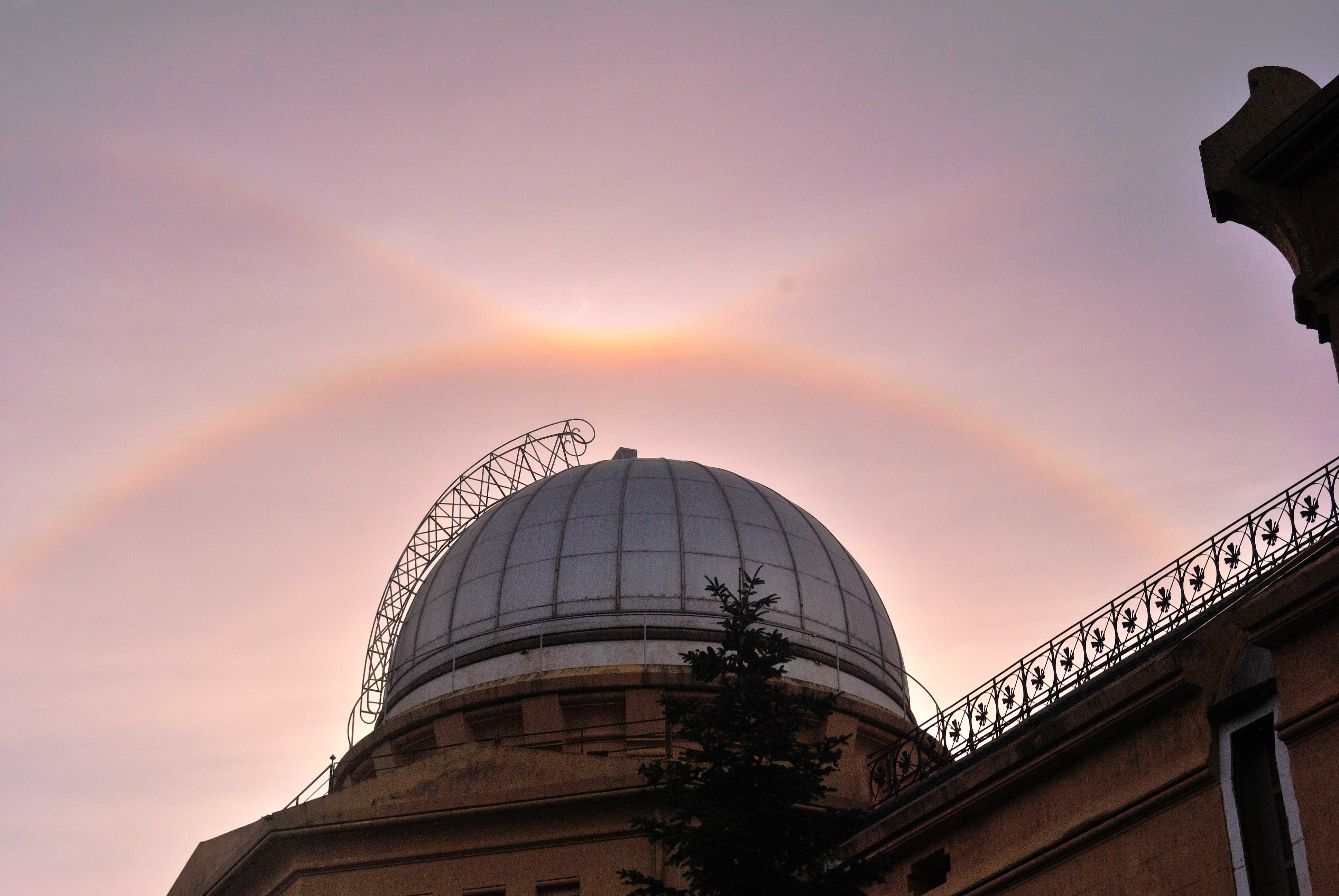Tangent arc
(Section 3.2.3.1.4)This is the generic term for several types of luminous arcs that form tangentially to other halos. Tangent arcs are sometimes seen on the outside of the 22° halo or the 46° halo. These arcs touch the circular halo at its highest or lowest points (upper tangent arc and lower tangent arc, respectively). The arcs have a form that varies with the angular elevation of the light source (the Sun or Moon). They are often short and may even appear as only a bright spot. When the light source is just above the horizon, the upper tangent arc appears as a narrow V shape. As the Sun or Moon rise in the sky, the V shape of the upper tangent arc opens to a shape resembling the outstretched wings of a large bird.
For the 22° halo, the lower tangent arc is normally below the horizon when the Sun or Moon are within 22° of the horizon, so it can only be seen from a high location, such as on a mountain (in diamond dust) or from an aircraft (in deeper Cirrus clouds). If visible, the inverted V shape of the lower tangent arc narrows and then broadens as the elevation of the light source increases.
When the Sun or Moon reach 32° above the horizon, the upper and lower tangent arcs link to form what is known as a circumscribed halo. This roughly oval halo is outside the 22° halo, touching it at the highest and lowest points. Sometimes, only the brighter upper and lower portions may actually be visible. When the Sun or Moon rise higher than about 50°, the @@ and circumscribed halo gradually becomes circular, and at even higher elevations, it merges with the 22° halo so that it may be difficult to tell them apart. However, the circumscribed halo is generally brighter, with purer colours, and with red as the innermost colour.




